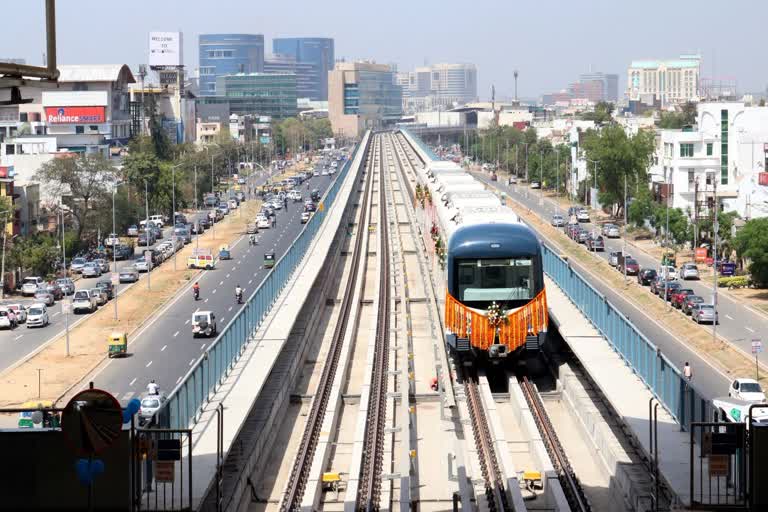Hyderabad: Modi Government has in recent past assured the nation of spending a staggering Rs 1 lakh crore to address issues pertaining to infrastructure sector as part of transforming India into a 5 billion USD economy in five years.
A team of senior bureaucrats led by finance secretary Athanu Chakraborty has prepared a plan of schemes to put on tracks aims to spend Rs 102 lakh crores in 18 States. Based on its recommendations, Union Finance Minister, Nirmala Sitharaman has recently presented the infrastructure agenda. Infrastructure agenda was categorised into financial and social sectors.
Allocations of funds sectors wise are power and fuel sector 24 per cent, roads 19 per cent, urban development 16 per cent and Railways 13 per cent. Also, the government said to have allocated funds which include rural development 8 per cent, health, education, drinking water and other social sectors, amounting to 3 per cent.
There is no exaggeration in the estimates that employment opportunities will increase and improve living standards if an impeccable plan of action is properly implemented at all levels. Doubts are being raised on the quantum of principal amounts to be spent by the respective governments in this regard.
The Finance Minister has unveiled a beautiful and rosy picture that the set targets will smoothly be reached if the Centre and the states share 39 per cent each and 22 per cent by the private sector. As per that estimate, the states have to bear about Rs 40 lakh crores of funds. There is no dispute that this amount will indeed be an unbearable burden to the states facing a financial crunch.
Though it sounds good that the infrastructure agenda is the right treatment for the financial slowdown, the typical question is how far it will become reality. Cause for concern is that eight industrial sectors, which are key in national economic growth and development, shown dwindling results for four consecutive months.
Poor performance in coal, raw oil, natural gas, steel and power sectors reflects the adverse effects of a slump. Growth in cement production too fell down to half in November. A positive estimation is that cement and steel sectors will make sure a big business across the country given a boost to infrastructure facilities by starting construction activity in sectors such as roads, shipyards, power and irrigation.
However, there is no parity between the official versions and objections being raised by experts in this regard. We cannot ignore analyses that the plan of the Centre to spend about Rs 40 lakh crores in five years is not a big amount than what is being spent now.
In 12th five years plan it was estimated that Rs 52 lakh crores were needed for infrastructure facilities. It includes to pool up 47 per cent of funds through public and private partnership, according to a report by Deepak Parekh committee seven years ago.
Assocham and Crisil in a joint white paper released four years ago made it clear that the banks will play a major role in pooling up the funds for the purpose. The banks are facing a typical situation of unpaid loans. In the current financial year, the bank loans for industries for the first eight months was down by 3.9 per cent.
How the centre is confident of reaching its new goal without addressing the problem like inordinate delay in giving permissions which will lead to a bad situation of stalling infrastructure development projects.
Reasons for adverse slump effect spread like an icy blanket on the nation are reduced power production, the decline in loan availability and lack of minimum support price to farm produce. Due to a lack of efficient policy decisions, private investments and exports suffer a downfall.
Finally, it led to a bad situation wherein revenue estimates and budget accounts of the states have suffered a jolt. With its infrastructure agenda to check this problem, the centre cannot ignore factual situations.
In its ease of doing business index, India has performed better from 143rd position five years ago as it reached to 63rd place now. Though, it presents a dismal show by occupying 163 ranks in implementing agreements and 154 ranks in the registration of assets.
Interestingly, Sanjiv Sanyal, Advisor to Finance Minister has recently found fault with the Centre and State governments to this poor condition. At this critical juncture, experts directly question the governments for their bankrupt attitude in implementing the related agreements. As per the International Infrastructure Index 2019, Malaysia performed better than India with regard to Airports facility.
Indian roads are not so good and need immediate facelift when compared to China, Saudi Arabia, South Korea and other nations. Also, India lags behind of China, Saudi Arabia and Germany in preventing floods with a plan of action and necessary modalities. Interestingly, nations such as Denmark, New Zealand, Singapore and Hong Kong which boasts of skilled human resources strength, are able to attract foreign investments.
India needs to strengthen its infrastructure sector by learning valuable lessons from such experiences, besides clearing trade hurdles. Our nation will sure develop as an unsurpassable and strong economy as and when domestic investors make a beeline.
Read more: NITI Aayog moots Rs 22,500 crore plan for private trains on 100 routes



